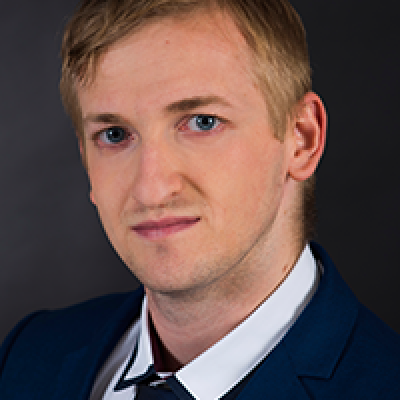Disinformation Narratives Surrounding the Assassination Attempt on the Slovak Prime Minister Robert Fico

Slovak Prime Minister Robert Fico was shot on 15 May following a government meeting in the town of Handlova. The suspect, a 71-year-old man from Levice in Slovakia, was immediately detained by the police. According to information available a week from the shooting, the shooter’s motivations were probably linked to his disagreements with the government’s policies. He was charged with premeditated murder at the trial stage.
With the lack of detailed information about the shooter’s motivations for the attack, false allegations and conspiracy theories have circulated online regarding the assassination attempt. In Slovakia, most of the disinformation narratives attempted to link the attack to opposition political parties or the media. Outside of Slovakia, disinformation sources speculated on the motives, citing the Prime Minister’s stance on Ukraine, the WHO pandemic act, or his criticism of NATO. This article provides a snapshot of the main disinformation narratives about the incident.
Methodology
To evaluate narratives circulating online about the attack, GLOBSEC used the media monitoring platform Gerulata to collect articles and social media posts related to the assassination attempt on the Prime Minister Robert Fico. A search query to was limited to the word “Fico” to minimise the differences in declensions of his first name across different languages. The search was limited to 24 hours since the assassination attempt and the analysis was focused on articles and social media posts in English, Slovak and Hungarian.
Key Narrative in Slovakia: A Member/Supporter of Progressive Slovakia
Most of the false or misleading narratives in the Slovak online space have been attempting to link the perpetrator to the main opposition party, Progressive Slovakia (PS), implying their responsibility. Shortly after the shooter’s name was published, a photograph was trending on social media, allegedly showing Martin M. Šimečka, father of the leader of the Progressive Slovakia party, as a godfather of the attack perpetrator’s book. The claim was quickly fact-checked by Demagog.sk and reported as false. Another set of posts suggested that the shooter was a member of PS, a claim directly rejected by Michal Šimečka, leader of the party.
Other narratives presented the shooter as a “supporter” of PS, citing, for example, his alleged support for the President Čaputová on social media during presidential elections in 2019. While she ran for elections as an independent candidate, she was a member of the PS party prior to her candidacy.
Another way of linking the attack to the opposition was by showcasing the shooter at protests, with disclaimers linking the protests to the PS party or its leader.
Efforts to link the perpetrator to the PS party were prevalent in the Hungarian media space as well. Origo, for example, suggested that the assailant was described by his acquaintances as a “radicalised leftist with ultra-liberal thinking,” a claim repeated in another Origo article. So far, there is no proof of the claim. The shooter’s acquaintances from his hometown noted there had been no signs of him radicalising. .
On Telegram, the channel ”Russians on the side of truth” (Oroszok az igazság oldalán) shared a Russian-language telegram post claiming the shooter was a supporter of PS. The post added that “some media, including anti-Russian foreign agents, are trying to claim that the shooter was in contact with the pro-Russian group Slovenskí Branci (SB),” but this was published by the “globalist” VSquare. The photo evidence of shooter’s connections with SB is most probably legitimate.
Narratives Outside of Slovakia: Conspiring on Reasons Behind the Attack
Numerous disinformation narratives and conspiracy theories have been circulating globally, speculating about the reasons for the assassination attempt on the Prime Minister’s life.
1. Stance on Ukraine and Security
One of the key trending narratives [1] [2] were trying to link the assassination attempt to the Prime Minister’s views on Ukraine, alleging, for example, that he “was against supporting Ukraine”, wanted relations with Russia “reinstated”, or that he was allegedly against NATO.
In Hungary, the radical left-wing Bal-rad portal stated that the Prime Minister allegedly came into sharp conflict with the EU and NATO concerning the policy on Ukraine. The article quoted RT, as well as Russian Duma MP Konstantin Zatulin, who claimed the attack was also an attack on Slovak-Russian relations.
Another theory on the attack was posted by the Hungarian-language Szent István Légiója group (Saint Stephen’s Legion), in four languages (Russian, Hungarian, Slovak and English) on Vkontakte. This group claimed that the Prime Minister was “potentially” assassinated because he conducted politics independent from the EU and did not support Ukraine. They also alleged – quoting Russian political scientist Vadim Trukhachev – that Czechia had arrested Ukrainians who wanted to assassinate the new Slovak president. This claim was refuted by Czech news service, which announced that the website had been hacked by an unidentified attacker and the story was fabricated.
2. Stance on International Institutions
One of the claims trending particularly on X was suggesting that the Prime Minister was against the WHO’s so-called “Pandemic Pact” and vaccinations. This narrative attempted to instill a broader conspiracy theory of the health-related international organisations to the assassination attempt. This conspiracy theory has also been mentioned, among others, by Andrew Tate.
3. Against the “Globalist Agenda”
Claims were made that the Prime Minister was in the way of “globalists.” Alleged proof of him being against the globalist agenda includes his opposition to the LGBTQI community or the Islamisation of Slovakia.
4. Hungary-Specific Narrative
In Hungary, a specific narrative emerged based on a statement by Georgi Markov, a Bulgarian constitutional lawyer living in Hungary. He claimed on X that the shooting was a warning to Hungarian Prime Minister Viktor Orbán and former US President Donald Trump because “Fico was the first Prime Minister in Europe who openly said he supported Viktor Orbán’s peace politics.” A tweet also suggested that the main issue was that Robert Fico stood behind Hungary in the EU.
These narratives all exploit the political motivation behind the shooting– as admitted by the shooter himself in a video leaked shortly following his arrest. Although the police are working with the premise that the shooter was part of a larger group internally supporting and motivating each other for the attack, the alleged reasons for the attack, spread by disinformation actors, are unproven and suggest a larger conspiracy behind the event that cannot be substantiated.
Specific examples with screenshots of the posts can be found in the PDF below.

